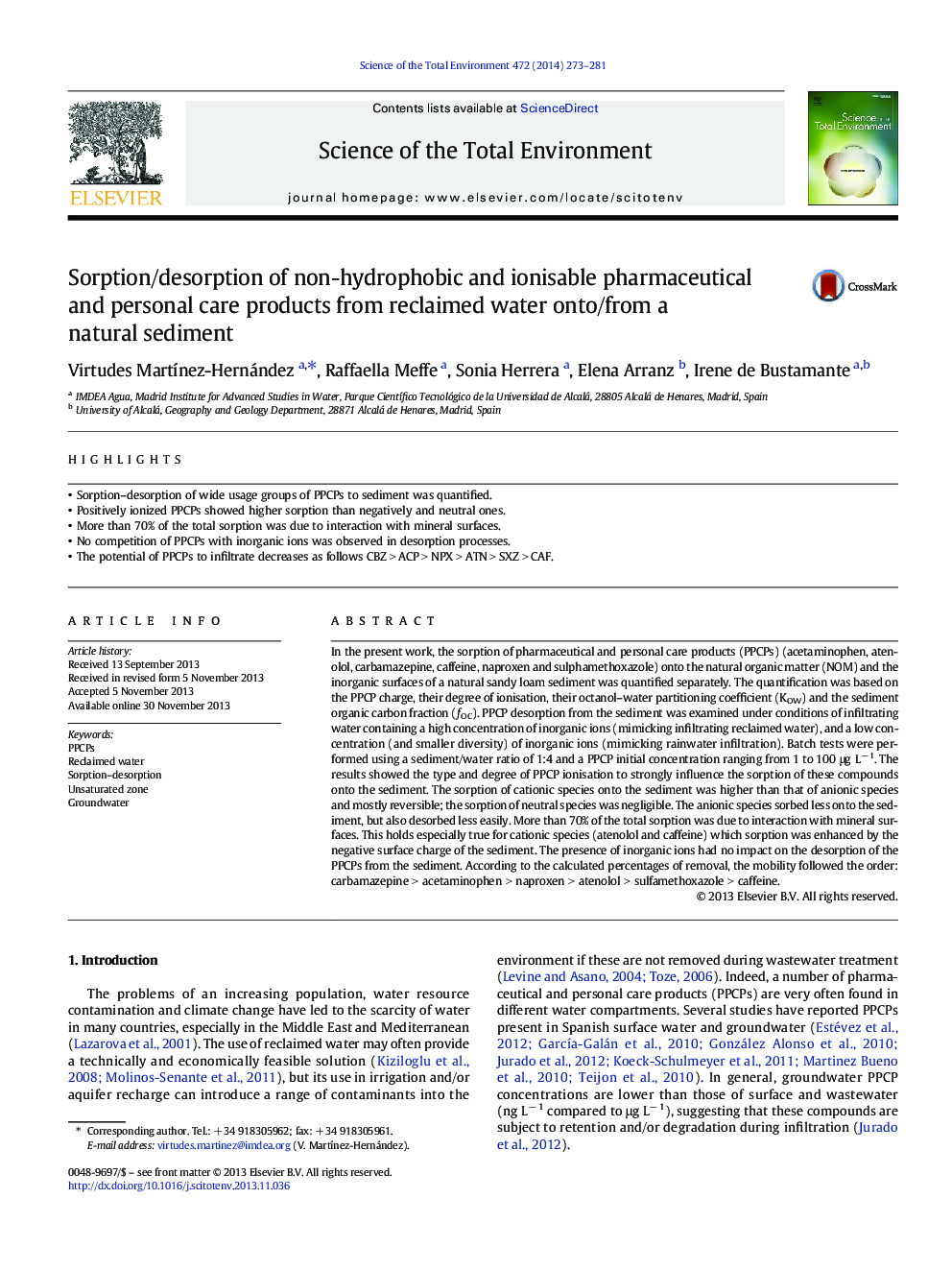| کد مقاله | کد نشریه | سال انتشار | مقاله انگلیسی | نسخه تمام متن |
|---|---|---|---|---|
| 6331123 | 1619792 | 2014 | 9 صفحه PDF | دانلود رایگان |
- Sorption-desorption of wide usage groups of PPCPs to sediment was quantified.
- Positively ionized PPCPs showed higher sorption than negatively and neutral ones.
- More than 70% of the total sorption was due to interaction with mineral surfaces.
- No competition of PPCPs with inorganic ions was observed in desorption processes.
- The potential of PPCPs to infiltrate decreases as follows CBZÂ >Â ACPÂ >Â NPXÂ >Â ATNÂ >Â SXZÂ >Â CAF.
In the present work, the sorption of pharmaceutical and personal care products (PPCPs) (acetaminophen, atenolol, carbamazepine, caffeine, naproxen and sulphamethoxazole) onto the natural organic matter (NOM) and the inorganic surfaces of a natural sandy loam sediment was quantified separately. The quantification was based on the PPCP charge, their degree of ionisation, their octanol-water partitioning coefficient (KOW) and the sediment organic carbon fraction (ÆOC). PPCP desorption from the sediment was examined under conditions of infiltrating water containing a high concentration of inorganic ions (mimicking infiltrating reclaimed water), and a low concentration (and smaller diversity) of inorganic ions (mimicking rainwater infiltration). Batch tests were performed using a sediment/water ratio of 1:4 and a PPCP initial concentration ranging from 1 to 100 μg Lâ 1. The results showed the type and degree of PPCP ionisation to strongly influence the sorption of these compounds onto the sediment. The sorption of cationic species onto the sediment was higher than that of anionic species and mostly reversible; the sorption of neutral species was negligible. The anionic species sorbed less onto the sediment, but also desorbed less easily. More than 70% of the total sorption was due to interaction with mineral surfaces. This holds especially true for cationic species (atenolol and caffeine) which sorption was enhanced by the negative surface charge of the sediment. The presence of inorganic ions had no impact on the desorption of the PPCPs from the sediment. According to the calculated percentages of removal, the mobility followed the order: carbamazepine > acetaminophen > naproxen > atenolol > sulfamethoxazole > caffeine.
Journal: Science of The Total Environment - Volume 472, 15 February 2014, Pages 273-281
